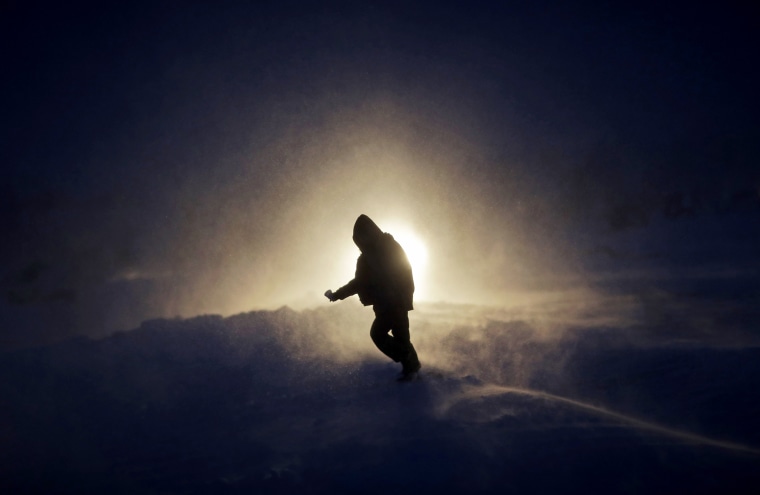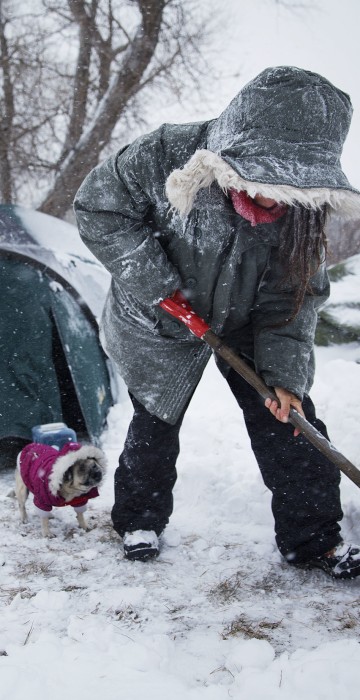
U.S. news
Dakota Pipeline Protesters Defy Winter's Chill
Snow and biting temperatures are just a few of the challenges faced by protesters camped out near the site of the Dakota Access pipeline.
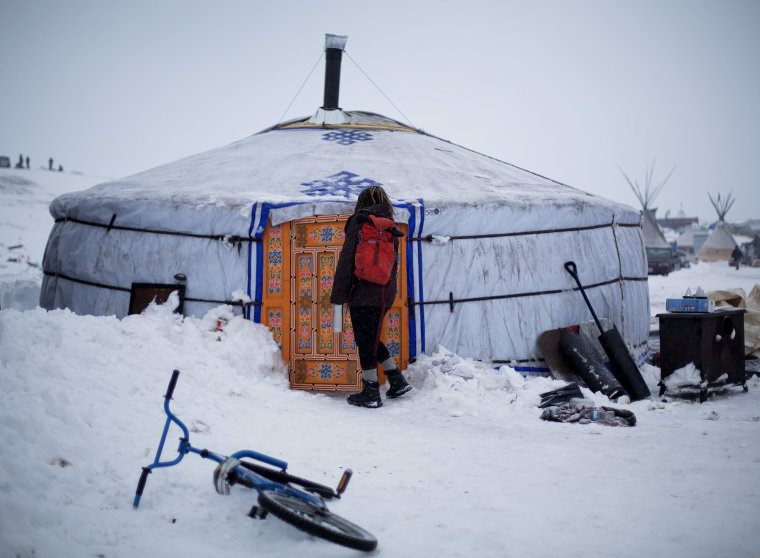
So far, those fighting the Dakota Access pipeline have shrugged off the heavy snow, icy winds and frigid temperatures that have swirled around their large encampment on the North Dakota grasslands. But if they defy next week's government deadline to abandon the camp, demonstrators know the real deep freeze lies ahead. Life-threatening wind chills and towering snow drifts could mean the greatest challenge is simple survival.
Above: A student walks into the school at the Oceti Sakowin camp where people have gathered to protest the Dakota Access pipeline near Cannon Ball, North Dakota. The school teaches on average 20 students a day in the traditional Lakota curriculum as well as math, reading and writing.

Loretta Reddog of Placerville, California, shovels a walkway to her tent while followed by her dog Gurdee Bean at the camp on Nov. 29.
"I'm scared. I'm a California girl, you know?" said Reddog who arrived several months ago with her two dogs and has yet to adjust to the harsher climate. Reddog has confidence in the camp community. "Everybody's really stepping up and taking care of each other," she said.
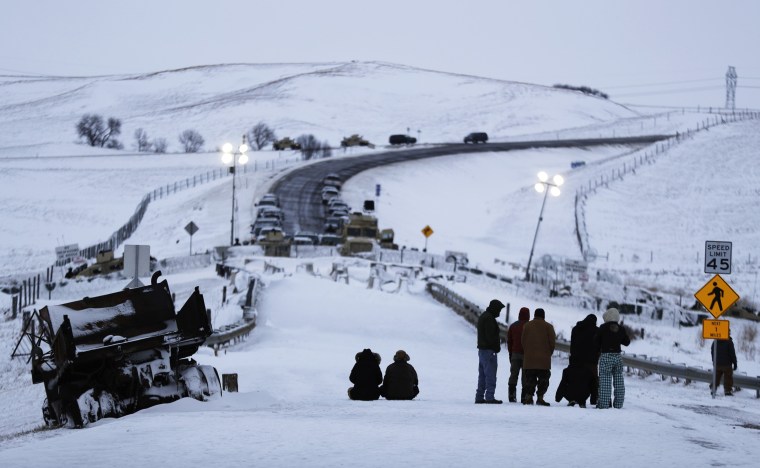
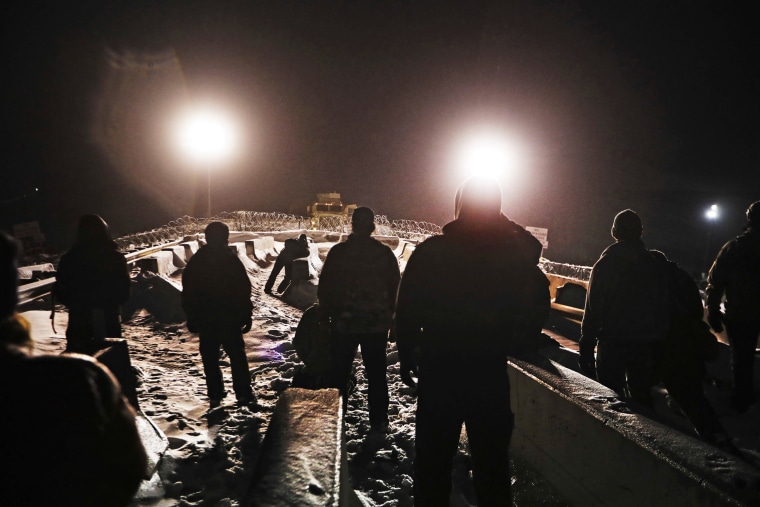
Military veterans walk onto a closed bridge to protest across from police protecting the Dakota Access oil pipeline site on Dec. 1. Large groups of U.S. military veterans have said they will serve as "human shields" in any possible clashes with law enforcement at the site.
More than 525 people from across the country have been arrested since August. In a recent clash between police and protesters near the path of the pipeline, officers used tear gas, rubber bullets and large water hoses in sub-freezing temperatures.
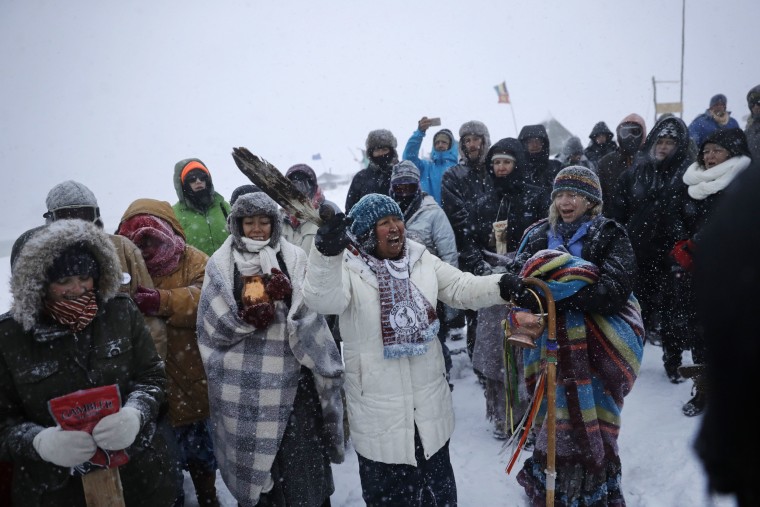
Beatrice Menase Kwe Jackson of the Ojibwe tribe leads a song during a traditional water ceremony along the Cannonball River at the camp on Nov. 29.
The pipeline is largely complete except for a short segment that is planned to pass beneath a Missouri River reservoir. The company doing the building says it is unwilling to reroute the project.
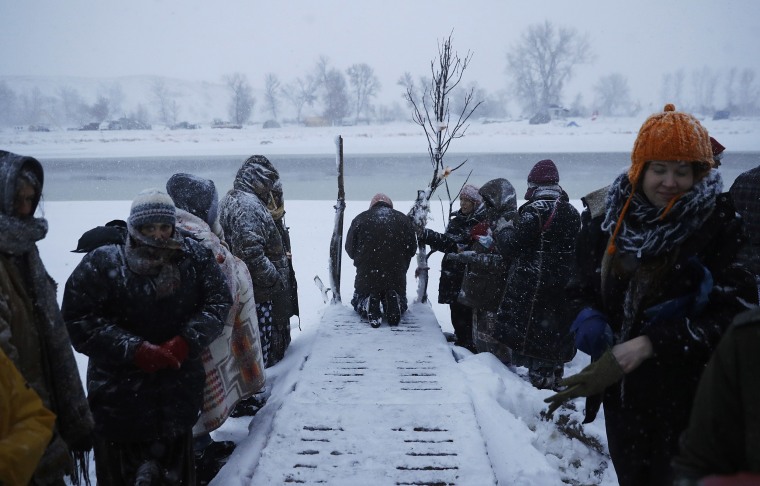
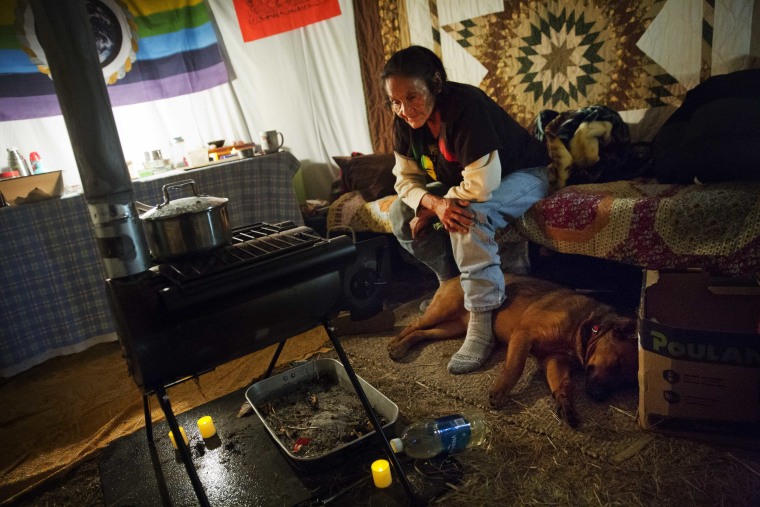
Grandma Redfeather of the Sioux tribe sits by the wood stove in her yurt at the camp on Nov. 29.
"I love it because I get to live my traditional way of life," said Redfeather of living at the camp. "To see all the different tribal nations living together as a community, I would have loved my grandpa to see that."
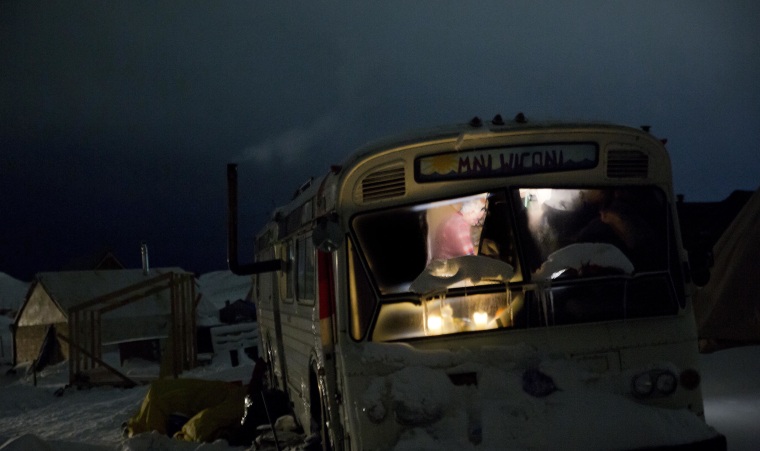
A man stands inside a bus turned into a camper at the Oceti Sakowin camp on Nov. 30.
The camp covers a half square mile, with living quarters that include old school buses, fancy motorhomes and domelike yurts. Hay bales are piled around some teepees to keep out the wind. There's even a crude corral for horses.
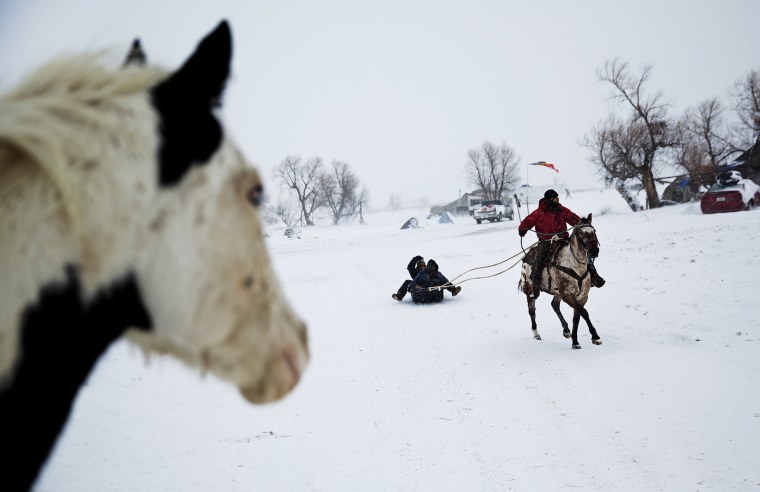

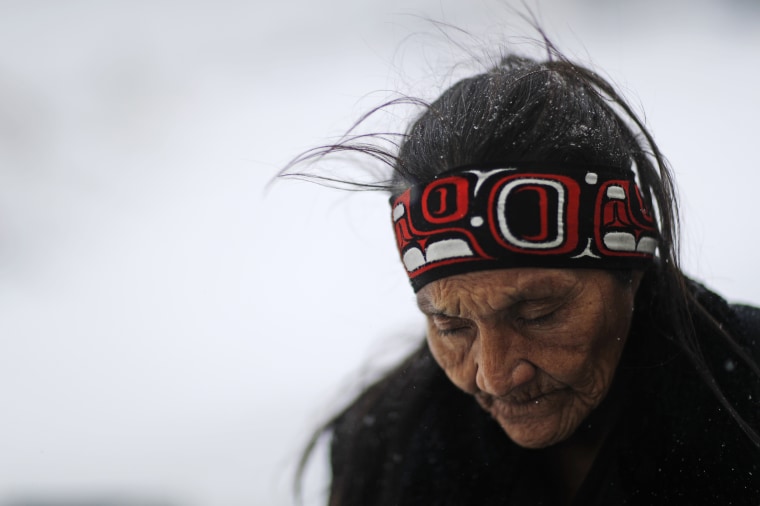
Grandma Redfeather of the Sioux tribe walks in the snow to fetch water on Nov. 29.
"It's for my people to live and so that the next seven generations can live also," said Redfeather of why she came to the camp. "I think about my grandchildren and what it will be like for them."
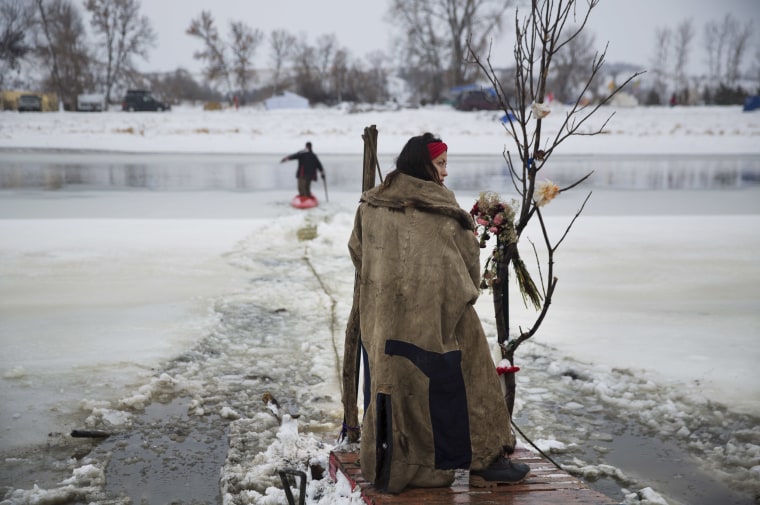
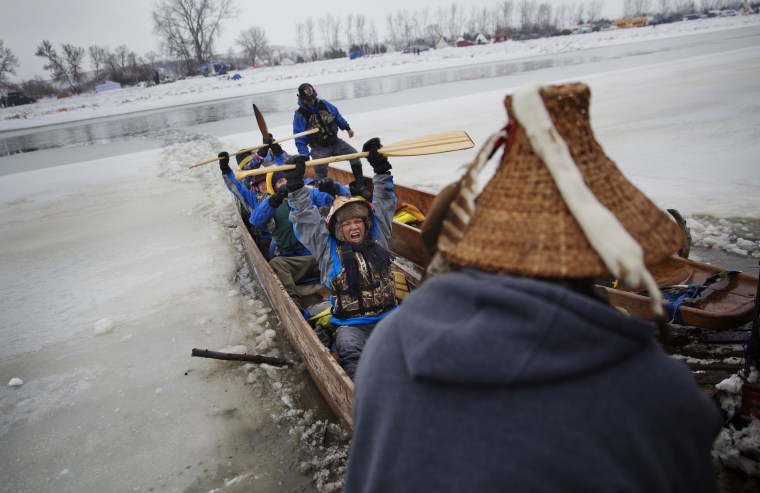
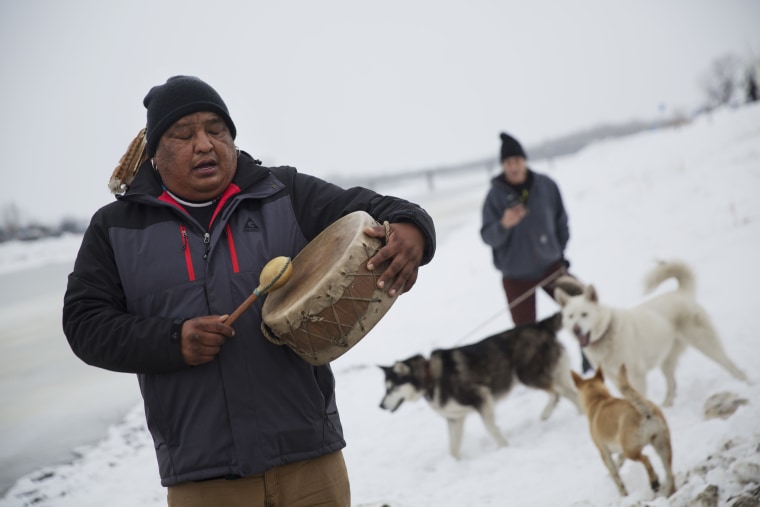
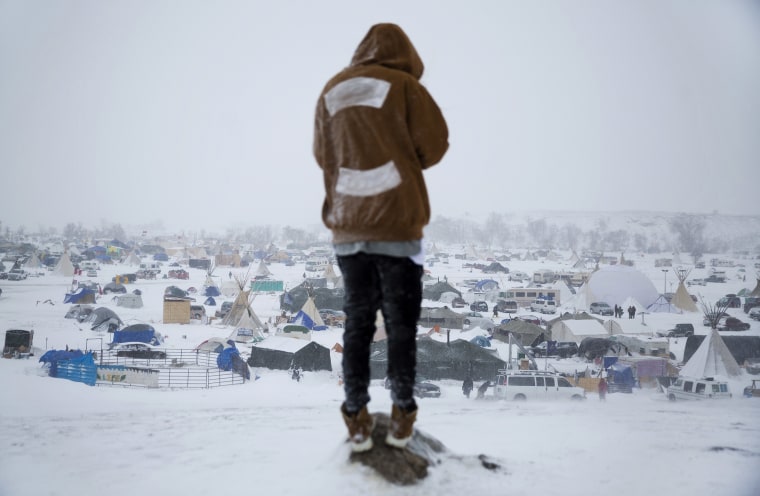
A protester is bundled against the chill at the camp on Nov. 29.
Related: Brutal Winter Conditions Deepen Pipeline Protesters' Resolve
